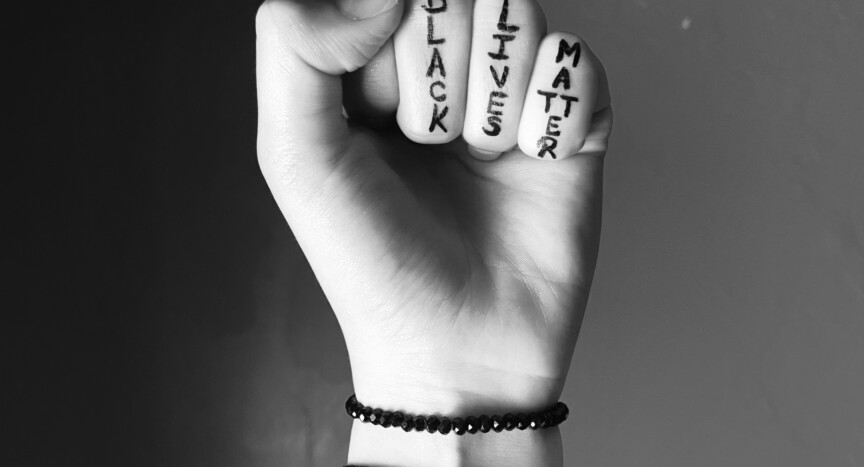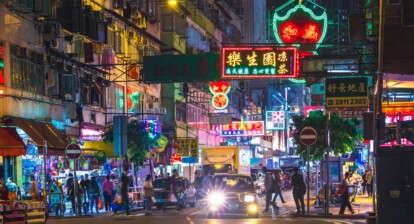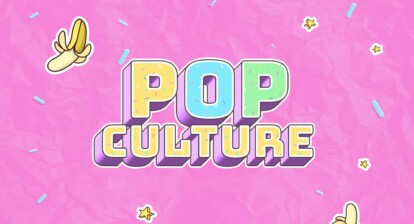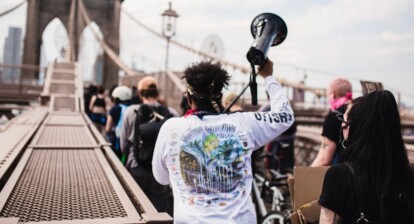Black Lives Matter (BLM) is a large social movement from the US, which fights for racial equality. They try to achieve this by attempting to change the systems and policies that uphold white supremacy [1]. This movement has existed for almost 10 years and has garnered both a lot of support and a lot of opposition. Groups like Blue Lives Matter (BLLM) and All Lives Matter (ALM) are just two examples of countermovements which BLM has to face. The goal of the opposition is to counter the BLM movement, by demobilizing them and slowing down their momentum, in order to keep the existing systems in place: the systems which cause and uphold the racial inequalities BLM is fighting against. However, the opposition, in this current climate, is fighting a battle they cannot win. In this article I will explain why I believe that this is the case.
The BLM movement started in 2013 and has steadily grown ever since, however they found little to no successes in terms of policy changes [2]. This drastically changed after the murder of George Floyd. The movement grew exponentially and spread rapidly throughout the US and was even picked up internationally to some extent [2]. However, with a sharp rise in BLM support occurring, a sharp rise in anti-BLM support also occurred [3, 4]. This anti-BLM support came in the form of several countermovements, of which BLLM and ALM were two.
Every countermovement has a goal they want to achieve, just like a normal social movement [5]. The overall goals of ALM and BLLM are very similar: they do not want change [6, 7]. They merely want to hold on to the current systems and policies which BLM tries to alter. They are not actively trying to achieve their own goal, they just want to stop BLM from reaching theirs. And herein lies the heart of my argument: ALM and BLLM are trying to conserve the old ways. However, they are destined to fail, because they are too late. Allow me to explain.
The New York Times called BLM one of the largest movements in US history, with millions of Americans having participated in protests all over the country [8].
Because of the amount of support for the movement and the amount of collective actions organized in the name of the movement, BLM succeeded in the first major step to change: they successfully changed the public discourse [4].
Public discourse is very important when talking about BLM. The reason the movement started was not only because there are racial inequalities, it was also because these racial inequalities were not acknowledged by the general public [1]. In order to achieve racial equality, BLM wants to instigate policy change [1]. However, policy change can only be achieved if the policy makers hear the concerns the movement has [9]. This means that changing the public discourse, to highlight these racial inequalities, is a key step in order for BLM to reach their goal. And this key step has been successfully reached.
While there are no major structural changes achieved by the movement yet, some policy changes have already occurred [10, 11]. All of this is caused by the shift in discourse.

The discourse around the topic of racial inequalities was originally based around ignorance: the problems were mostly ignored or not seen by policy makers and the general (white) public [4]. This was in favor of ALM and BLLM. However, this changed after the rise of BLM: the ignorance surrounding the topic of racial inequalities in the US had drastically changed into a focus on these inequalities instead [4, 12]. No longer can people just ignore this subject, they have to address it one way or another. With a focus on these racial inequalities, BLM will slowly but surely win more and more ground from the opposition. Every small policy change which is implemented and every person being made aware of the discourse, is a win, because the old systems and the old mindset of ignorance are dwindling [13].
ALM and BLLM have no chance of succeeding after this. They are grasping at straws trying to go back to a time of ignorance. They are only able to postpone the inevitable. Because what they want is for nothing to change, and BLM is showing that this is no longer an option. Cultural change is already here: people are aware. It is just a matter of time for structural change to follow.
Referenties
[1] About. (n.d.). Black Lives Matter. Retrieved October 20, 2022, from https://blacklivesmatter.com/about/
[2] Boudreau, C., MacKenzie, S. A., & Simmons, D. J. (2022, April 6). Police Violence and Public Opinion After George Floyd: How the Black Lives Matter Movement and Endorsements Affect Support for Reforms. Political Research Quarterly, 75(2), 497–511. https://doi.org/10.1177/10659129221081007
[3] Giorgi, S., Guntuku, S. C., Rahman, M., Himelein-Wachowiak, M., Kwarteng, A., & Curtis, B. (2022). Twitter corpus of the #blacklivesmatter movement
and counter protests: 2013 to 2021. https://doi.org/10.48550/arXiv.2009.00596
[4] Dunivin, Z. O., Yan, H. Y., Ince, J., & Rojas, F. (2022, March 3). Black Lives Matter protests shift public discourse. Proceedings of the National Academy of Sciences, 119(10). https://doi.org/10.1073/pnas.2117320119
[5] Meyer, D. S., & Staggenborg, S. (1996, May). Movements, Countermovements, and the Structure of Political Opportunity. American Journal of Sociology, 101(6), 1628–1660. https://doi.org/10.1086/230869
[6] West, K., Greenland, K., & Laar, C. (2021, May 12). Implicit racism, colour blindness, and narrow definitions of discrimination: Why some White people prefer ‘All Lives Matter’ to ‘Black Lives Matter.’ British Journal of Social Psychology, 60(4), 1136–1153. https://doi.org/10.1111/bjso.12458
[7] Solomon, J., & Martin, A. (2019, July). Competitive victimhood as a lens to reconciliation: An analysis of the black lives matter and blue lives matter movements. Conflict Resolution Quarterly, 37(1), 7–31. https://doi.org/10.1002/crq.21262
[8] Buchanan, L., Bui, Q., & Patel, J. K. (2021, October 25). Black Lives Matter May Be the Largest Movement in U.S. History. The New York Times. Retrieved October 21, 2022, from https://www.nytimes.com/interactive/2020/07/03/us/george-floyd-protests-crowd-size.html
[9] Della Porta, D. and Diani, M. (2020) The Effects of Social Movements, In D. della Porta and M. Diani, Social Movements: an Introduction. Oxford: Wiley Blackwell.
[10] Phelps, M. S., Ward, A., & Frazier, D. (2021, December 1). From police reform to police abolition? How Minneapolis activists fought to make black lives matter. Mobilization: An International Quarterly, 26(4), 421–441. https://doi.org/10.17813/1086-671x-26-4-421
[11] Black Lives Matter Protests: What’s Been Achieved So Far. (2020, August 13). DoSomething.org. Retrieved October 21, 2022, from https://www.dosomething.org/us/articles/black-lives-matter-protests-whats-been-achieved-so-far
[12] Atkins, A. (2018, July 25). Black Lives Matter or All Lives Matter? Color-blindness and Epistemic Injustice*. Social Epistemology, 33(1), 1–22. https://doi.org/10.1080/02691728.2018.1483879
[13] Bailey, J., & Leonard, D. J. (2014). Black Lives Matter: Post-Nihilistic Freedom Dreams. Journal of Contemporary Rhetoric, 5(3/4), 67–77.





